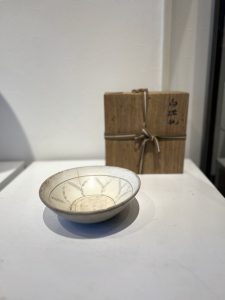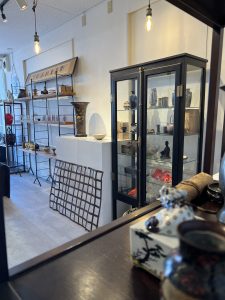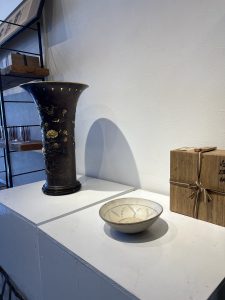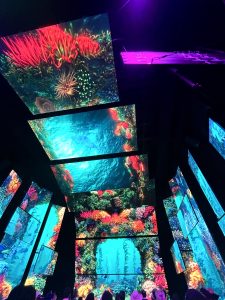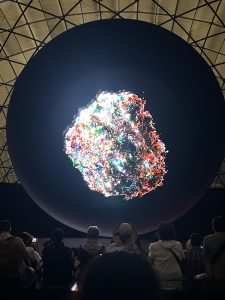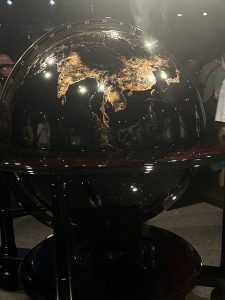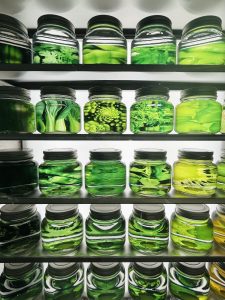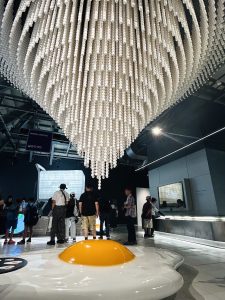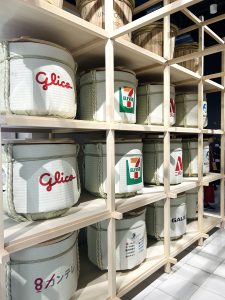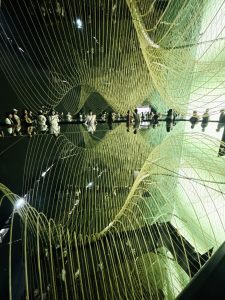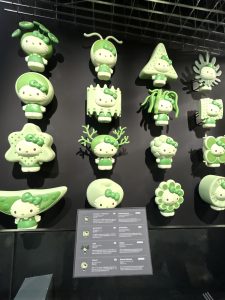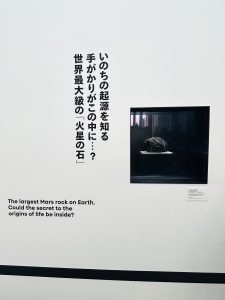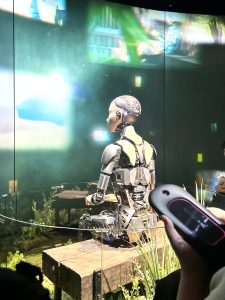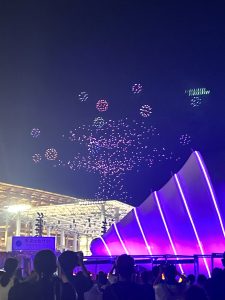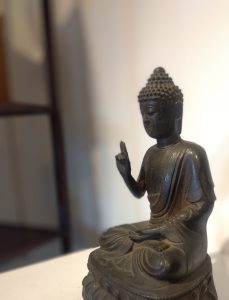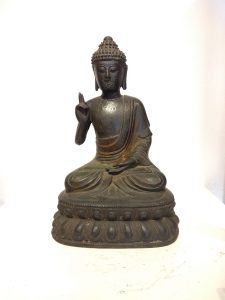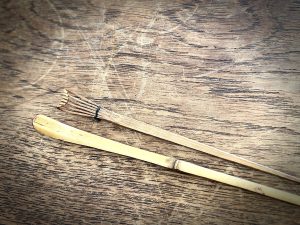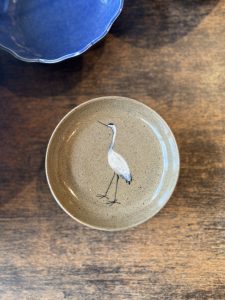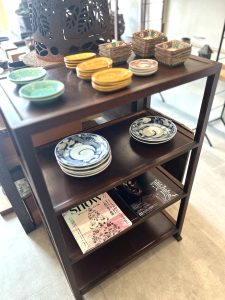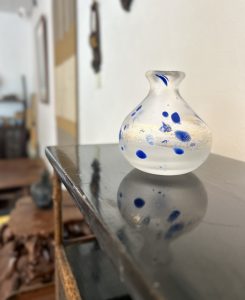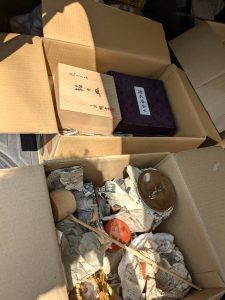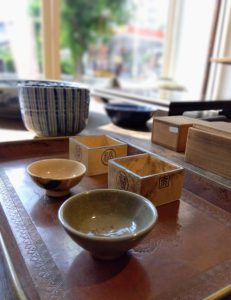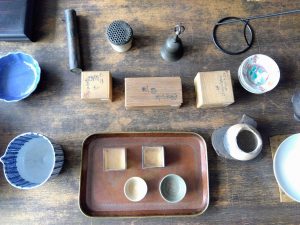暑さ冷めやらぬまま9月となりました(愛知県名古屋市千種区姫池通 骨董買取 古美術風光舎)
2025.09.02
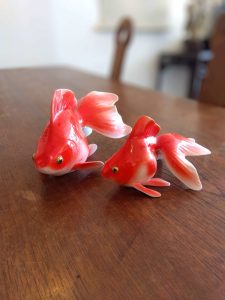
暑さ冷めやらぬまま9月になってしまいました。今日も真夏のような日差しが届いております名古屋です。今日も安定の37℃予想。そんな暑い日が続く名古屋ですが、実は名古屋市の気温は千種区が基準なんです。
ここ風光舎がごさいます千種区の日和町にある「名古屋地方気象台」で計測された温度・天気が名古屋市の基準となっています。
場所は本山と自由ヶ丘の中ほどにある、少し小高くなっている丘の上です。
そう。こちらの小高くなっている丘…なかなかの急な坂を登った上にあります。ですので、公表されている気温が、計測されている場所が風通しがよいので街中よりも気温が低いのでは?と疑問に思ったことも。
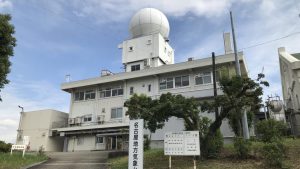
前市長の河村たかしさんも過去の定例会見でこう言っておられました。
『何遍も言ってますけど、名古屋はよ、気象台がね、本山の山の上のどえらけにゃあええとこにあるんですわ。一遍行ってみやあ、まあ、普通の人は住めんようなええとこだにこりゃ。ええ風がヒューヒューと吹いてきましてですね。~中略~
ま、建物はええとこですよ、古い建物で、名古屋の気象台は。一遍行ってみやあ、これすばらしいとこですね言って。こんなとこ普通の人住めへんけど、こんなとこを名古屋の平均温度にしてええか言って。』
と、このように素敵なところだとご紹介くださっていますが、住宅地ですので、その周辺に普通に住んでらっしゃる方ももちろんいます。笑
ちなみに名古屋弁でそのままお届けしてみましたが、こんなにコテコテにしゃべる人はほとんどいませんからね?
では実際どのように測定しているかというと、一般的に地上付近の気温は地表面の影響を受けやすいため、
・地表に近すぎない
・太陽が直接当たらない
・照り返しなどの影響が少ない
・風通しが良い
・地表から1.2mから1.5mの高さ
といった条件を満たす場所で測定を行うこととされているようです。
小学校の理科の授業で学んだ、学校内に設置された百葉箱(複数の温度計等が内部に入っている白い格子状の木製の箱)を思い浮かべる方もいらっしゃるのではないでしょうか。
実際の気象庁の気温観測は、風通しや日当たりの良い場所で、電気式温度計を用いて、芝生の上1.5mの位置で観測することを標準としているようです。また、電気式温度計は、直接日光が当たらないように通風筒の中に格納されており、通風筒上部の電動ファンから外気を取り入れて気温を計測しているそうです。
ここでポイントなのは芝生の上1.5mの位置ということ。つまり風通しがよく強制換気された日陰で、ちょうど大人の人の顔のあたりの温度ということになります。
ですが、私たちが実際に暮らしている街中の温度というのは、アスファルトや建物の輻射熱、太陽光の日射が加わりますので、日差しが強くなるほど観測値より私達が感じている気温の方が高くなります。
実際、直接照り返しのある場所ではかなり温度が高く、50度60度ぐらいにもなるとも聞きます。地面により近いところにいる子どもやワンちゃんは大人よりもっと暑く感じているので、注意が必要ですね。
最高気温が発表されても、「いや、もっと高いでしょ」と思わないではいられない日々の連続ですので、これからは、これまでの気温と併せて、アスファルト上の体感温度も数値として一緒に発表したら分かりやすいんじゃないでしょうか?どうでしょう。いや、余計にうんざりするからやめたほうがいいか…。
ではでは、また(スタッフT)
The heat hasn’t even subsided yet, and it’s already September. Here in Nagoya, the sun is shining as brightly as it did in midsummer. Today’s forecast is a steady 37°C. While Nagoya continues to endure these scorching days, the temperature for Nagoya City is actually measured in Chikusa Ward.
The temperature and weather recorded at the “Nagoya Regional Meteorological Observatory” in Hiyori-cho, Chikusa Ward, where Fukosha is located, serve as the standard for Nagoya City.
The location is on a slightly elevated hill, halfway between Motoyama and Jiyugaoka.
Yes. This slightly elevated hill… is reached after climbing a rather steep slope. So, I’ve sometimes wondered if the published temperatures might be lower than in the city center because the measurement site is well-ventilated?
Former Mayor Takashi Kawamura also mentioned this during a past regular press conference.
“I’ve said it many times before, but you see, Nagoya’s meteorological observatory is located on top of Mount Motoyama, in a damn fine spot. Go take a look sometime. It’s the kind of place no ordinary person could live. The wind whistles right through it. ~[omitted]~
Well, the building itself is fine, an old structure, the Nagoya Meteorological Observatory. Go take a look, you’ll say it’s a splendid spot. But can we really use such a place, where ordinary people couldn’t live, as the basis for Nagoya’s average temperature?”
Since it’s a residential area, of course there are people living normally in the surrounding neighborhood. (laugh)
But when written down, Nagoya dialect… I mean, hardly anyone actually speaks this thickly, right?
So how do they actually measure it? Generally, since ground-level temperatures are easily influenced by the surface, measurements are taken at locations meeting these conditions:
* Not too close to the ground surface
* Not directly exposed to sunlight
* Minimal impact from reflected heat
* Well-ventilated
* At a height of 1.2m to 1.5m above the ground surface
That seems to be the standard.
Some of you might recall the Stevenson screen (a white, latticed wooden box containing multiple thermometers) installed on school grounds, something you learned about in elementary school science class.
For actual Japan Meteorological Agency temperature observations, the standard method involves using an electric thermometer at a height of 1.5 meters above grass in a well-ventilated, sunny location. Furthermore, the electric thermometer is housed within a ventilation tube to avoid direct sunlight, and it measures air temperature by drawing in outside air via an electric fan at the top of the tube.
The key point here is the position 1.5 meters above the grass. This means it measures the temperature in a well-ventilated, shaded area with forced airflow, roughly at the height of an adult’s face.
However, the temperatures we actually experience in urban areas are influenced by radiant heat from asphalt and buildings, plus direct sunlight. So, the stronger the sunlight, the higher the temperature we feel compared to the measured value.
In fact, in areas with direct reflected heat, temperatures can get quite high—I’ve heard they can reach around 50 to 60 degrees Celsius. Children and dogs, being closer to the ground, feel the heat much more intensely than adults, so caution is needed.
Even when the highest temperature is announced, it’s a daily occurrence where you can’t help but think, “No, it must be hotter than that.” So, going forward, wouldn’t it be clearer if they announced the perceived temperature on asphalt alongside the regular temperature readings? What do you think? Or maybe it’s better to avoid it since it might just make people feel even more miserable…
Well then, see you later (Staff T)
*******************
ご実家の整理やお片付けなどをされている方のご相談などが多くございます。
お片付けなどくれぐれもご無理のないようになさってくださいませ。
風光舎では古美術品や骨董品の他にも絵画や宝石、趣味のお品など様々なジャンルのものを買受しております。
お片付けをされていて、こういうものでもいいのかしらと迷われているものでも、どうぞお気軽にご相談下さいませ。
また風光舎は、出張買取も強化しております。ご近所はもちろん、愛知県内、岐阜県、三重県その他の県へも出張いたします。
まずは、お電話お待ちしております。
愛知県名古屋市千種区姫池通
骨董 買取【古美術 風光舎 名古屋店】
TEL052(734)8444
10:00-17:00 OPEN
#出張買取#骨董#古美術#骨董品#絵画#版画#茶道具#刀剣#彫刻

